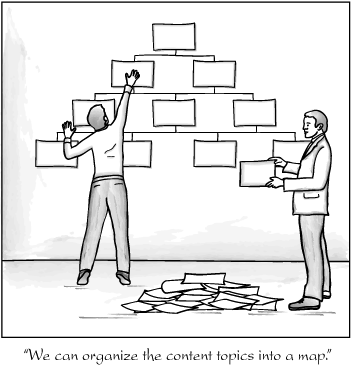Chapter 17. Implementing a Topic Architecture

An information architect must learn about business goals and context, content and services, and user needs and behavior; and then work with colleagues to transform this balanced understanding of the information ecology into the design of organization, labeling, and navigation systems that provide a solid but flexible foundation for the user experience. | ||
| --Peter Morville | ||
Applying your information architecture to individual projects and areas of content requires that every team member understand the organization-wide Information Model. Your Information Model provides the framework for creating, managing, and publishing the content needed by information users in your organization and among your customers. The primary components of an Information Model are
the standard patterns and the specific content plans for the output your organization will deliver to users
the information types that encompass the information to be authored
the internal structure of those information types, embodied in content units
the metadata schema used to describe each information object or content topic you create
the strategy you will use to optimize the management of content in your organization’s repository, avoiding duplication of topics and proliferation of topics that provide little value to the customer
Mature information-development organizations have always developed ...
Get Information Development: Managing Your Documentation Projects, Portfolio, and People now with the O’Reilly learning platform.
O’Reilly members experience books, live events, courses curated by job role, and more from O’Reilly and nearly 200 top publishers.

